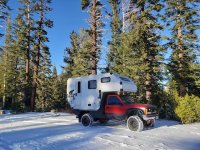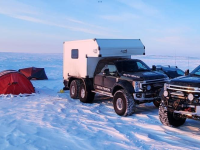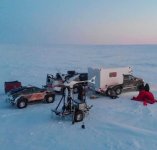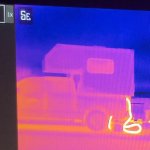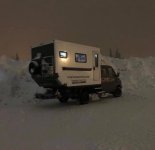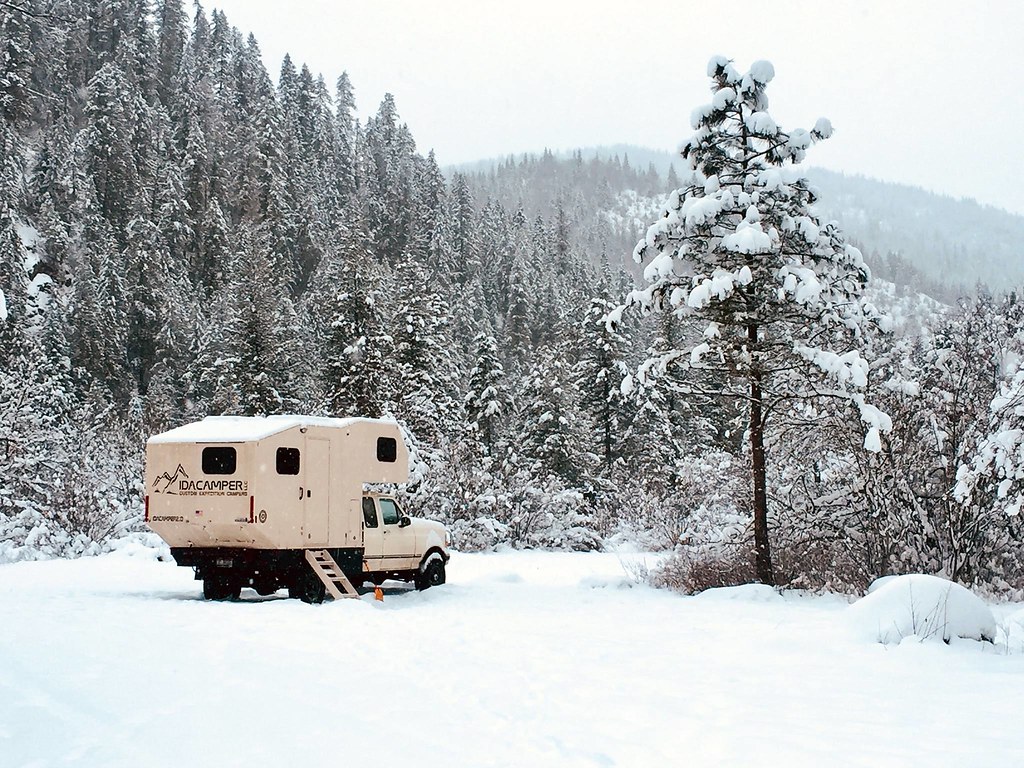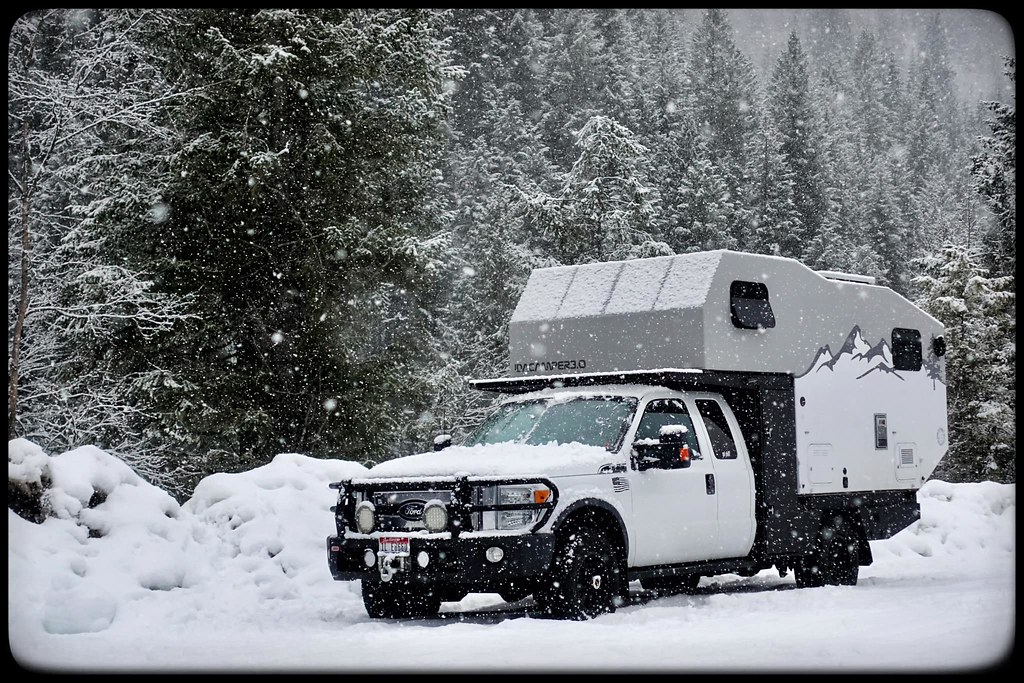I say you must sort out your use-case, and balance it with desired comfort and budget.
Sure, you could go with a TotalComposites setup, which is most excellent, or even a custom job like our setup, but do you actually need it?
With occasional trips to Tahoe, depending upon stay duration, you would likely be just fine in essentially any off-the-shelf "4-season" camper or even less.
We "survived"

5 year of 4-season travel, extended weekend and week long trips to local ski resorts, etc...
in nothing more than an old janky camper I retrofitted to our old powerstroke.
In all actuality, it did remarkably well, and kept us comfortable (enough) all the way down to 20-something below zero F on multiple occasions.
Though its actual purpose was to act as a test mule in preparation for building our custom camper.
And it performed as intended, showing us what we needed, what we could live without, design challenges, etc.
Admittedly, its certainly not for everyone. but it was 100% functional.
What is showed us is outlined in the post above.
Though in our experience traveling the PNW, mostly North Idaho differs a bit....
Key features to ask when selecting a cold weather camper:
- Thermal transfer free construction
- High R value insulation (do your research on insulation material)
- Double pane windows/ insulated doors
- Proper ventilation between seat cushion and bed mattress! You do not want to trap cold air that will then condensate in hidden spots
- Diesel heater . Skip the thermostat function and rather have it run 24/7 on high than low temp and on/off. This will kill your diesel heater in no time.
- All waterlines/tanks inside the heated space
- Forget pop up campers in cold temps. The condensation will drive you crazy
- Ask for proof of “thermal efficiency“ . Thermal images or talking to owners/users will Confirm the claims.
I know TC is in the business to sell products, however...
*Thermal transfer FREE..... Id say transfer FREE while great, is not THAT beneficial.
Reducing thermal transfer, namely by elevating the overall thermal envelope is what I would suggest.
Your thermal envelope is a combination of things, not just walls. As in, making your walls thicker can make up for less than ideal windows.
Better windows can make up for less than ideal walls, etc....
*proper ventilation between cushions and mattress.... Honestly, I've never seen any evidence in our camper to justify such efforts.
Besides that, I agree 1000%
Here is our custom camper....
In 10+ years and likely 75k+ miles now, it has already outlived one truck and is currently living its life on a 2012 Superduty.
Remember that thermal transfer I mentioned.... Most of the time the claim is that thermal transfer results in condensation on the interior.
This photo is a great example, showing heat "escaping" the camper thru the framing. Yet there is ZERO condensation on the interior.


